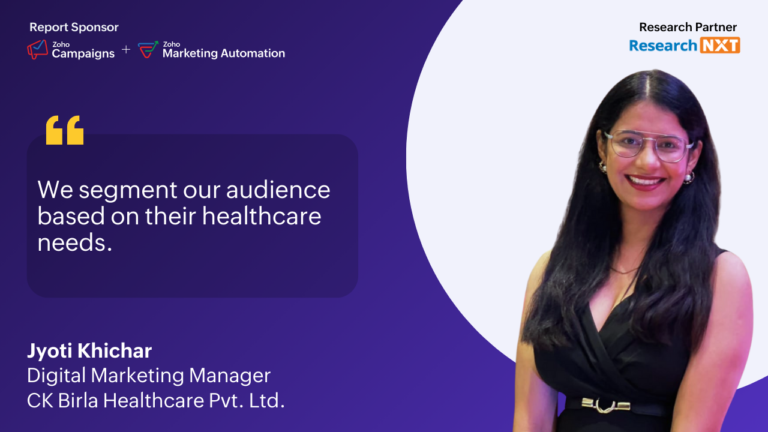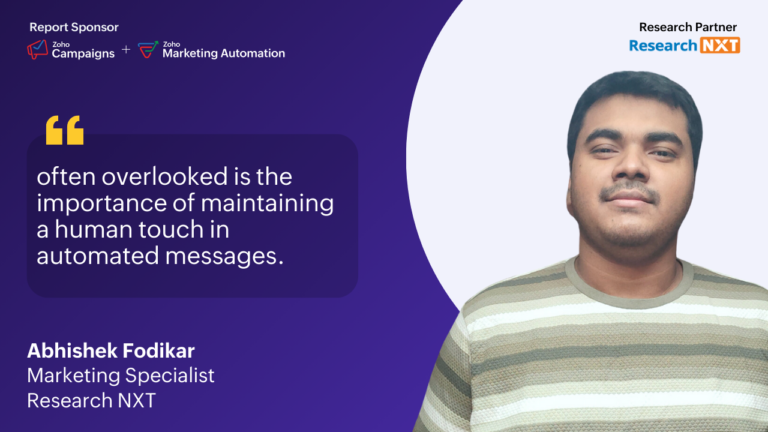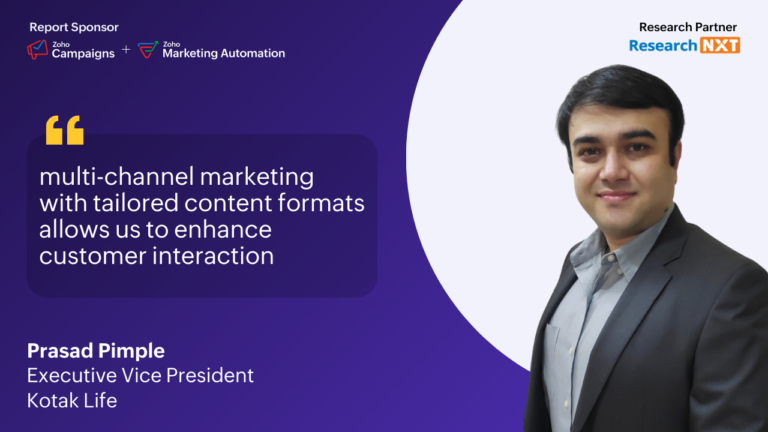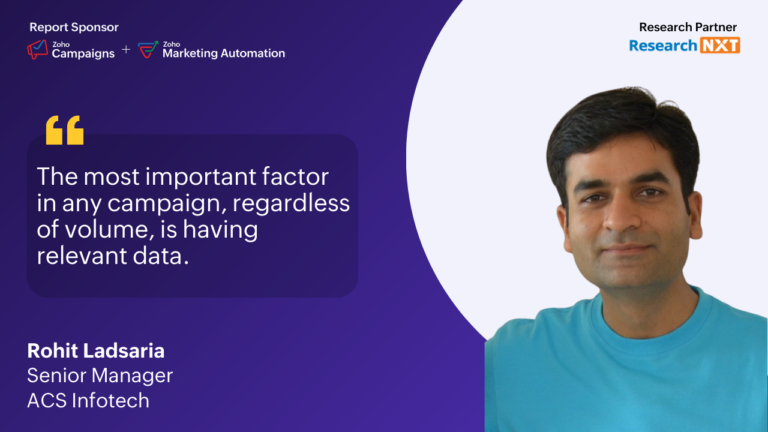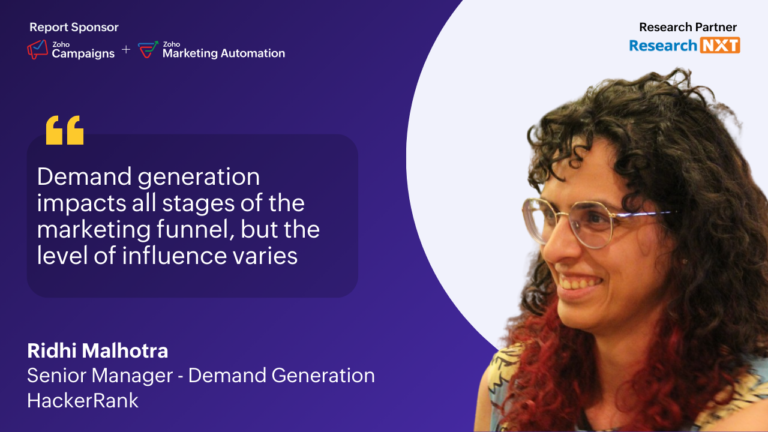
Mastering Digital Marketing Integration: Strategies for Consistency, Real-Time Optimisation, and Personalisation
In this interview with Research NXT, Amitesh Baranwal, Digital Marketing Manager at SK Finance Ltd, discusses his journey in digital marketing, starting from his initial role to his current position. He explains his holistic approach to integrating various digital channels, emphasising the importance of consistency and data-driven strategies. Amitesh also highlights the critical role of real-time data in optimising campaigns and the transformative impact of marketing automation on his work. He addresses challenges like data integrity and tool integration, sharing how he overcomes them. Finally, he outlines his strategies for maximising ROI and offers suggestions for topics to be covered in the upcoming report.
Key Takeaways:
- Integrating various digital channels with a focus on consistency and data-driven strategies is essential.
- Real-time data is essential for campaign optimisation, allowing quick adjustments and improved ROI.
- Marketing automation tools have streamlined processes, particularly in lead nurturing and retargeting.
- Challenges like data integrity and tool integration can be addressed through regular audits and close collaboration with IT teams.
- Personalisation in automated campaigns can be maintained using dynamic content and behavioural triggers.
- Maximising ROI involves careful planning, flexible budgeting, and real-time performance optimisation.
"Consistency across multiple channels is crucial to building a solid brand identity and ensuring that the customer journey is seamless."
Please share a brief overview of your professional journey in digital marketing. We would like to know how you started in this field and progressed in your career.
Amitesh: I started my digital marketing career in 2018 as an intern, but later, in February 2019, I joined Money Mouth Marketing Inc. as a digital marketing executive, where I gained foundational experience in email marketing, social media management, SEO, and managing large-scale PPC campaigns. This role also helped me develop technical skills in WordPress, backlink management, and competitor analysis.
Currently, I oversee all digital channels for SK Finance, SK Foundation, and GUL, managing a monthly PPC budget of over INR 500K. I focus on integrating content across platforms, optimising campaigns in real-time using data-driven insights, and maintaining a cohesive brand presence. Throughout my career, I’ve faced challenges such as adapting to the rapidly changing digital landscape, which I’ve overcome through continuous learning and a commitment to innovation.
How do you integrate various digital channels, such as Social Media, Email, SMS, WhatsApp, and Search, with your overall marketing strategy?
Amitesh: In integrating various digital channels into a cohesive marketing strategy, my approach is both holistic and data-driven. Consistency across these channels is crucial to building a solid brand identity and ensuring that the customer journey is seamless. To achieve this, I begin by developing a comprehensive content and brand strategy that outlines the tone, messaging, and visual elements to be used across all platforms. This strategy is informed by market research, audience segmentation, and competitive analysis. By aligning all digital efforts with this strategy, I ensure that whether a customer interacts with our brand on social media, receives an email, or sees a Google ad, they experience a consistent and compelling narrative.
Effective integration of channels requires a multi-layered approach. For example, a customer might first encounter the brand through a targeted Facebook ad. This ad would lead them to a landing page optimised for conversions, where they might sign up for a newsletter. From there, an automated email sequence would nurture them with personalised content, potentially driving them to make a purchase via an SMS promotion. To facilitate this, I utilise UTM parameters and tracking pixels to monitor the customer’s journey across channels, allowing for precise attribution and optimisation.
Read More
As an experienced digital marketing professional, how do you leverage real-time data to track and optimize your marketing campaigns?
Amitesh: Real-time data is the backbone of my campaign optimisation efforts. I rely on a range of tools, including Google Analytics, Facebook Insights, and custom dashboards built with data visualisation tools like Tableau or Power BI. The KPIs I monitor include CTR, conversion rates, cost per lead (CPL), and customer lifetime value (CLV). For instance, during a recent cross-channel campaign, I noticed in real time that a particular ad set on Instagram was underperforming. By quickly reallocating the budget to a more effective ad set on Facebook, I was able to increase the campaign’s ROI by 20%. This ability to make data-driven decisions on the fly is what sets successful campaigns apart.
Marketing Automation is an integral part of modern marketing activities. How has it transformed your marketing strategy, and what specific tasks do these tools help streamline?
Amitesh: Marketing automation has been a game-changer in my strategy, allowing me to scale efforts while maintaining precision and personalisation.
Tools like HubSpot have been instrumental in streamlining previously manual and time-consuming processes. For instance, lead nurturing has become more efficient through automated email workflows that adapt based on user behaviour. If a lead downloads a whitepaper, for example, they are automatically entered into a sequence that offers related content, nurturing them down the funnel. Automation has also optimised retargeting efforts. Integrating CRM data with platforms like Google Ads allows me to create highly targeted ad campaigns that retarget users with personalised content based on their previous interactions.
What are the biggest challenges you face with marketing automation, and how have you addressed them?
Amitesh: One of the biggest challenges with automation is ensuring data integrity. Inaccurate or outdated data can lead to ineffective campaigns and a poor user experience. To address this, I’ve implemented regular data audits and cleansing routines. Another challenge is the complexity of integrating different tools within the marketing stack. For example, syncing data between a CRM and an automation platform can sometimes result in delays or discrepancies. To mitigate this, I work closely with IT teams to ensure proper API integration and data synchronisation.
How do you maintain a personal touch in your automated marketing campaigns? What strategies do you employ to ensure that your messaging remains authentic and engaging despite being automated?
Amitesh: While automation is powerful, maintaining a personal touch is crucial to keeping audiences engaged. I achieve this through dynamic content that changes based on user attributes, such as their name, location, or previous interactions with the brand. Additionally, I use behavioural triggers to send emails or messages at the right moment—such as a cart abandonment email sent within hours of the action. This level of personalisation ensures that even automated communications feel relevant and timely, fostering a deeper connection with the audience.
What strategies do you use to maximise ROI, and how do you measure the success of your campaigns?
Amitesh: Maximizing ROI is a critical aspect of my role, and I approach budget management with meticulous planning and agile execution. My budgeting process starts with historical performance data, which I analyse to identify trends and opportunities. I then forecast outcomes based on different scenarios, allocating budgets accordingly. For example, in a multi-channel campaign, I might allocate 40% of the budget to high-performing Google Ads, 30% to Facebook ads targeting a specific demographic, 20% to email marketing, and the remaining 10% to experimental channels like LinkedIn Ads or programmatic buys.
I measure success using various metrics tailored to each campaign’s specific goals. These include ROAS, cost per acquisition (CPA), and customer lifetime value (CLV). For example, in a recent campaign with a budget of INR 100K, I achieved a ROAS of 9.7X by continuously optimising ad creatives, adjusting targeting criteria based on performance data, and reallocating the budget in real-time to capitalise on high-performing segments. By maintaining a flexible budget allocation strategy, I ensure that resources are directed where they will generate the most value.
Before we conclude this discussion, what specific topics or aspects would you like to see covered in our report?
Amitesh: For the report, I would like to see a deep dive into the latest trends in digital marketing, particularly around AI and machine learning’s role in automation and personalisation. Insights into case studies of successful campaign strategies, especially those that have effectively integrated emerging technologies, would be invaluable. Additionally, practical guidance on optimising digital marketing efforts in an increasingly fragmented media landscape would be beneficial. This includes strategies for balancing brand consistency with the need for platform-specific content and the evolving expectations of digital audiences.

